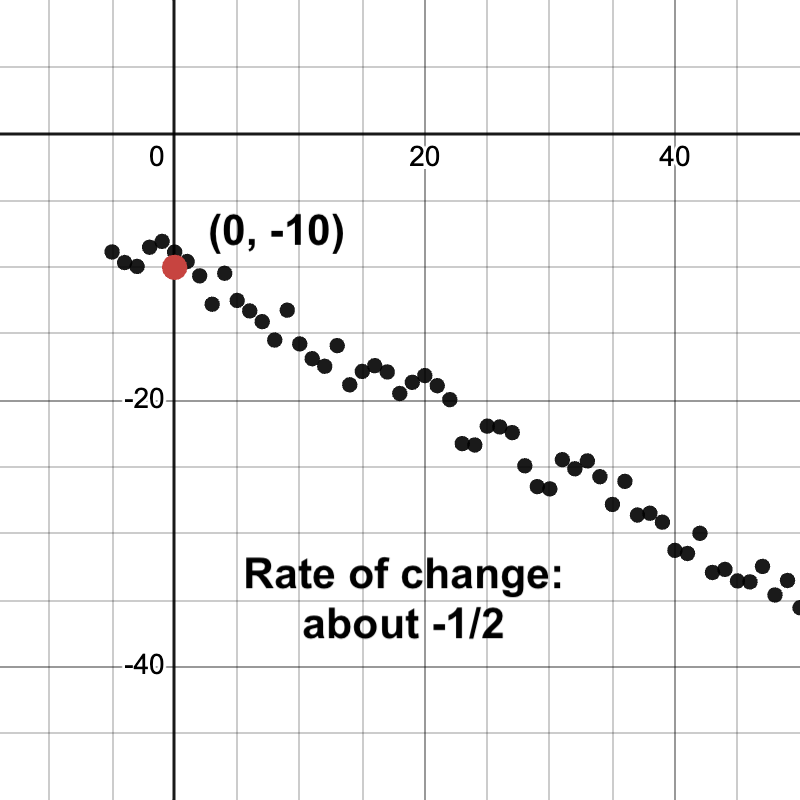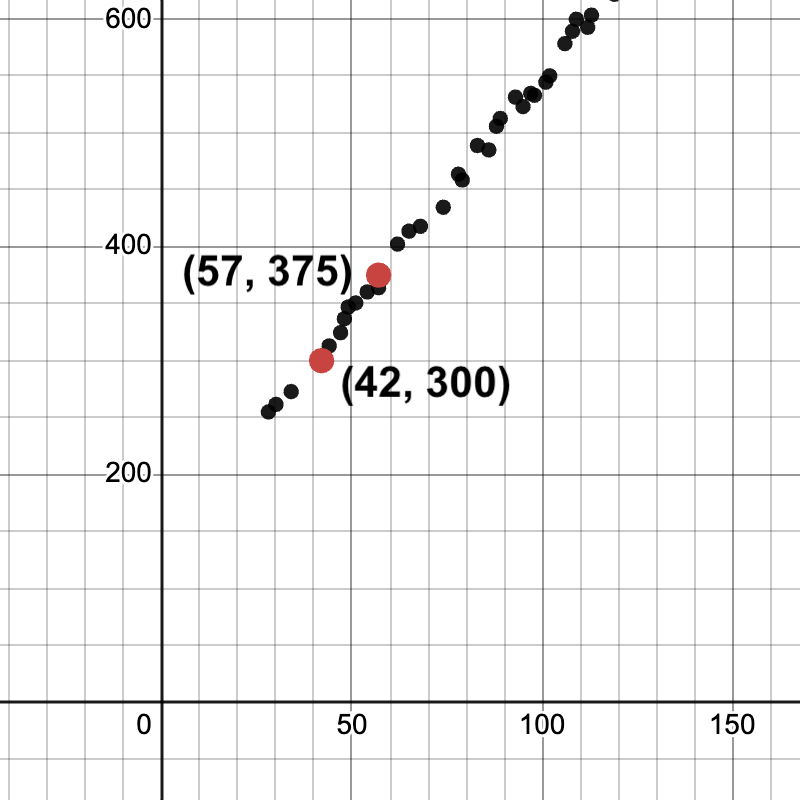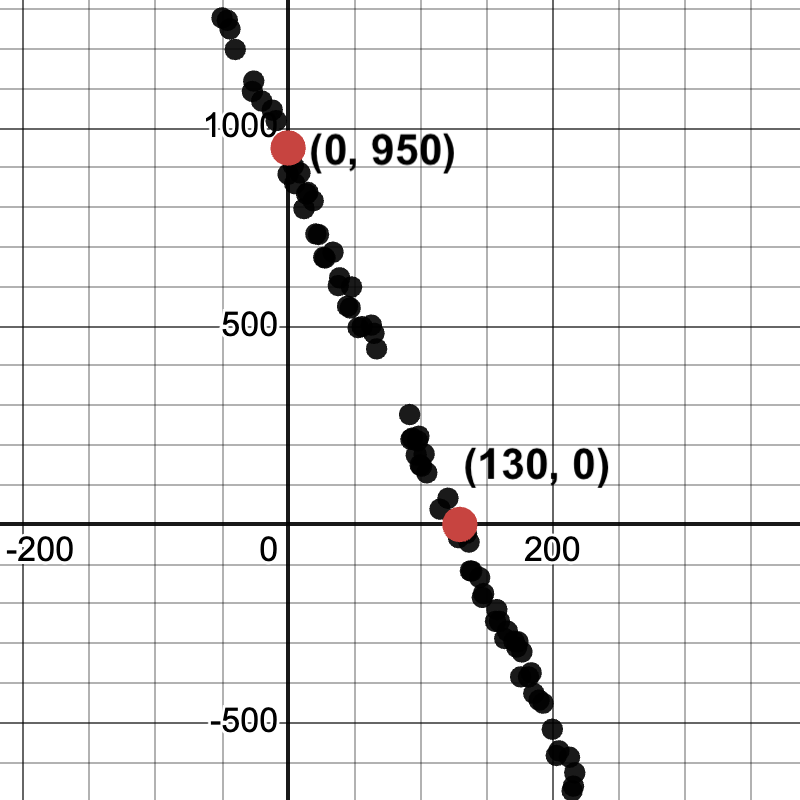For each set of data provided below,
-
Decide which form of the line would be the easiest to build from the available information.
-
Write a definition of the linear model in that form.
-
Translate the definition into Pyret notation.
1 |
|
Linear Model: Your model slope-intercept, point-slope, or standard form - which ever is easiest!
|
2 |
|
Linear Model: Your model slope-intercept, point-slope, or standard form - which ever is easiest!
|
3 |
|
Linear Model: Your model slope-intercept, point-slope, or standard form - which ever is easiest!
|
These materials were developed partly through support of the National Science Foundation, (awards 1042210, 1535276, 1648684, 1738598, 2031479, and 1501927).  Bootstrap by the Bootstrap Community is licensed under a Creative Commons 4.0 Unported License. This license does not grant permission to run training or professional development. Offering training or professional development with materials substantially derived from Bootstrap must be approved in writing by a Bootstrap Director. Permissions beyond the scope of this license, such as to run training, may be available by contacting contact@BootstrapWorld.org.
Bootstrap by the Bootstrap Community is licensed under a Creative Commons 4.0 Unported License. This license does not grant permission to run training or professional development. Offering training or professional development with materials substantially derived from Bootstrap must be approved in writing by a Bootstrap Director. Permissions beyond the scope of this license, such as to run training, may be available by contacting contact@BootstrapWorld.org.


